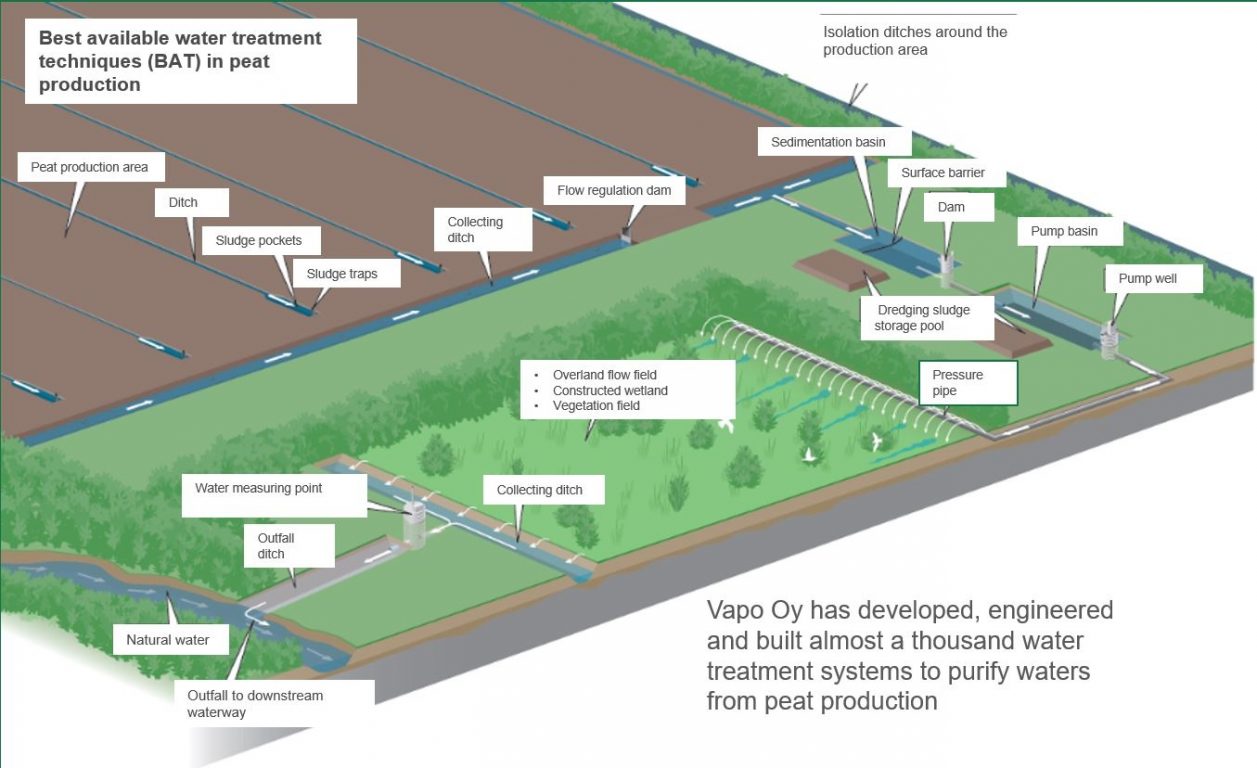Sustainable harvesting for peat bogs

Best technique on a case-by-case basis
Preparing peat bogs for peat harvesting is a closely regulated activity. Permits are needed, although regulation varies from country to country. At all stages of peat harvesting, environmental impacts are monitored. The monitoring of environmental impact is water, one of the aspects taken into account. More specifically, the potential impact of peat harvesting on watercourses and water treatment. At peat harvesting areas, the best available techniques (BAT) are always defined on a case-by-case basis. BAT is taking into account the particular conditions at each harvesting area.
Techniques for peat harvesting
Water treatment using year-round overland flow or chemical purification is the best available technique. For peat harvesting implementing a year-round overland flow has to be researched, regardless the size of the harvesting area. If not doable, water treatment must be at least as effective as overland flow. Other methods include vegetation fields, wetlands or chemical purification. The best available technique for these harvesting areas could also be a combination of several different methods.
Target is 100% BAT
Our target is 100% BAT. This is a part of our sustainable harvesting and after life concept for peat bogs. 100% BAT starts by planning water treatment structures on a site-by-site basis. BAT include overland flow fields and chemical purification, like mentioned before. When using vegetation fields, water is led from the harvesting site to a sedimentation pond. Here the majority of the sludge separates by settling at the bottom of the pond. From here the water is led to an overland flow field, vegetation field or wetland, which effectively bind suspended solids and nutrients. Chemical purification is suitable for areas where there is no area suitable for overland flow or other enhanced methods.
Read more: Read about peat and after-life concept for peat bogs here.
Questions about our Biodiversity & restoration? Contact Nina Kinnunen.